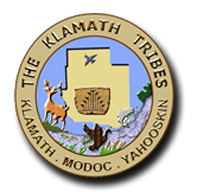Perry Chocktoot is a member of all three of the Klamath Tribes: (Klamath, Modoc, and Yahooskin Paiute). He was raised in the traditional lands of the Klamath Tribes and the history of his family is found throughout the area. The town of Chiloquin has street names like Chocktoot Street, and the main street in Chiloquin, which Perry says, “is named after my two great grandpa’s that signed the Treaty of 1864.” He is the director of the Culture and Heritage Department. He is a former Tribal Council member, and former Chairman of the Intertribal Fish and Water Commission. Currently, he sits on the Oregon Governor’s Task-force for Cultural Resource Identification. He also conducts the Annual C’waam Ceremony of the Klamath Tribes every year in March. As a lifelong fisherman, he helps out anyway he can on restoration of the C’waam fishery and supports stream restoration to aid in their recovery.
A cultural expert, Chocktoot is an avid fisherman, cook, a lifelong hunter, obsidian knife maker, and is actively involved in reinvigorating the tradition of making and using tule duck decoys. Chocktoot’s parents, grandparents and Elders raised him to be self-sufficient, to live off of the land and waterways. He grew up learning to fish for salmon, steelhead, c’waam, red band trout; hunt deer, ducks, and geese; cook or smoke his catch; and share his bounty with others. “That’s a tradition passed on . . . When I married and I had children of my own, I taught my family to smoke fish, can fish and how to harvest, so I’m not sending them into the world having a lack of knowledge to fend for themselves. If need be my boys and my daughter could make an earth lodge, fish and dry it, hunt and dry it. They can smoke trout, salmon, steelhead, deer meat, or elk meat, and survive. I’ve given them the tools.”
Observing the year’s round of food gathering is critical to survival. Chocktoot explains, “You know, we function on that seasonal round gathering. In the Spring (May and June) we do root digging [apos, camus, biscuit root]. And in the spring, it’s fishing. Then in summer, it’s meat drying time and continue fishing. . . . the huckleberries are just coming in then. . . . Then in the fall, the meat is in its prime. During the fall, deer and elk hunting occur as well as berry picking. Then all of it comes to a screeching halt when there’s four foot of snow on the ground. Then it’s time to eat what you harvest.”



